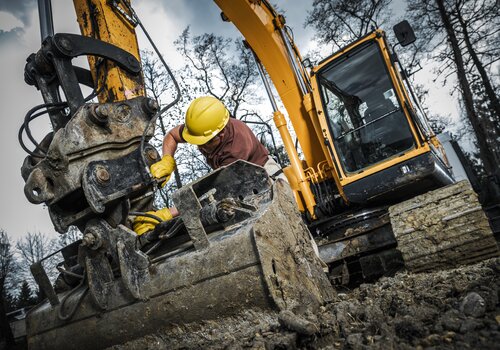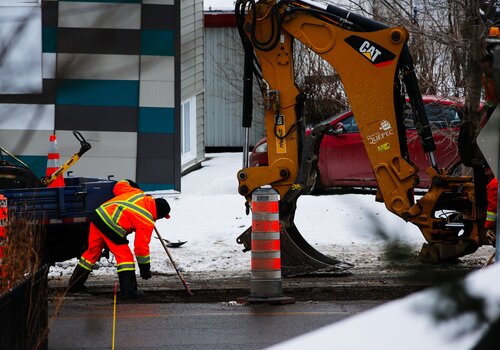In the construction industry, cranes are indispensable for lifting and moving heavy loads. But while the base crane itself is crucial, the real potential lies in the mastery of crane accessories. Understanding which tools to use and when can dramatically improve the functionality and productivity of your lifting operations. Let’s explore some of the latest innovations in crane accessories that every contractor should know to elevate their lifting solutions.
THE IMPORTANCE OF CRANE ACCESSORIES
Crane accessories are attachments or supplemental tools that extend crane capabilities, making it adaptable for various tasks. By mastering the use of these accessories and staying informed of industry trends, contractors can optimize their operations, reduce project timelines and handle complex tasks with greater precision. These accessories improve the crane performance and contribute to job site safety and cost-effectiveness. The construction industry continues to integrate innovative technologies that make crane operations smarter and safer.
COLLISION AVOIDANCE SYSTEMS
What They Are: Collision avoidance systems enhance safety in overhead lifting by preventing accidents involving cranes, facility structures and personnel.
Why They Are Essential: These systems, which include laser, infrared, and ultrasonic sensors, continuously monitor crane positions and detect potential collisions. If a risk is detected, they trigger alarms or notifications and may automatically slow or stop crane movement.
When to Use Them: This technology is essential for shared crane runways or dual-hoist operations, ensuring safer working environments and protecting equipment and workers.
AUTOMATIC CRANE HOOKS
What They Are: Automatic crane hooks allow operators to latch and release loads remotely. This reduces the need for manual handling, improving both safety and efficiency.
Why They Are Essential: Modern automatic crane hooks allow operators to rig and release loads remotely. This innovation minimizes the need for manual handling, reducing the risk of accidents and improving operational efficiency.
When to Use Them: Automatic crane hooks can be used when exposure to extreme temperatures or other hazards could result in significant injury or even death.
CRANE MATS
What They Are: Crane mats are heavy-duty platforms placed beneath the crane to provide a stable working surface. They help distribute the crane’s load and prevent it from sinking into soft or uneven ground.
Why They Are Essential: Stability is key to safe lifting operations. Crane mats prevent tipping and offer a reliable foundation, especially when working on soft or muddy job sites. They can also give access to flooded areas and help protect fragile ecosystems.
When to Use Them: Deploy crane mats for jobs that take place on unstable terrain, such as in wetlands, construction sites with loose soil or during projects where ground conditions are uncertain.
Match the accessory to the specific requirements of the job during the project planning phase. This ensures that the right tools are on-site and ready when needed.
LOAD MONITORING SYSTEMS
What They Are: Load monitoring systems measure the weight of the load being lifted and provide real-time feedback to the operator.
Why They Are Essential: Load monitoring systems help prevent overloading, which can lead to dangerous crane failures. By providing real-time data, operators can ensure that they stay within the crane’s load limits.
When to Use Them: Integrate load monitoring systems when lifting heavy or irregular loads to reduce risk and comply with safety regulations.
ANTI-SWAY DEVICES
What They Are: Anti-sway devices minimize the swinging motion of a load during lifting or movement.
Why They Are Essential: Controlling the sway of a load not only improves precision but also enhances safety by preventing accidental collisions or load instability.
When to Use Them: Use anti-sway devices when lifting loads that require high accuracy or when operating in environments with tight spaces or significant wind conditions.
Best Practices for Mastering Crane Accessories
Conduct Regular Training: Operators should be trained in the correct use of crane accessories. Familiarity with how to safely attach and detach these tools can prevent accidents and optimize productivity.
Inspect Accessories Frequently: Routine inspection and maintenance of crane accessories help identify potential wear and tear, reducing the risk of failures during operation.
Plan Ahead: Match the accessory to the specific requirements of the job during the project planning phase. This ensures that the right tools are on-site and ready when needed.
Safety First: Always adhere to manufacturer guidelines and industry safety standards when using crane accessories. Proper use of safety gear and adherence to protocols can prevent injuries and accidents. Visit OSHA to learn more.
Photo credit: NAVINTAR/BIGSTOCKPHOTO.COM












